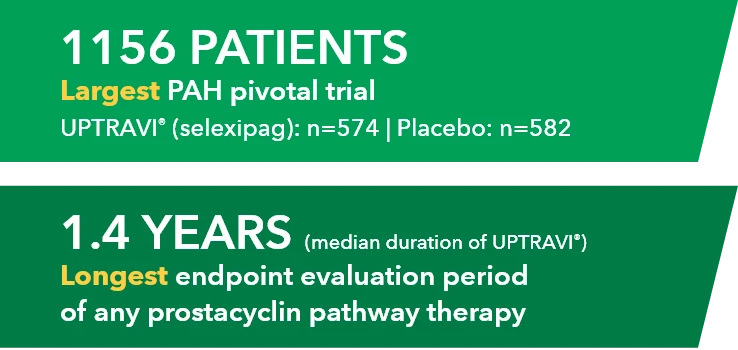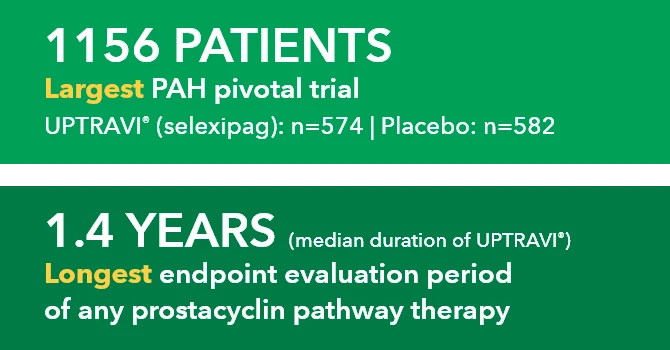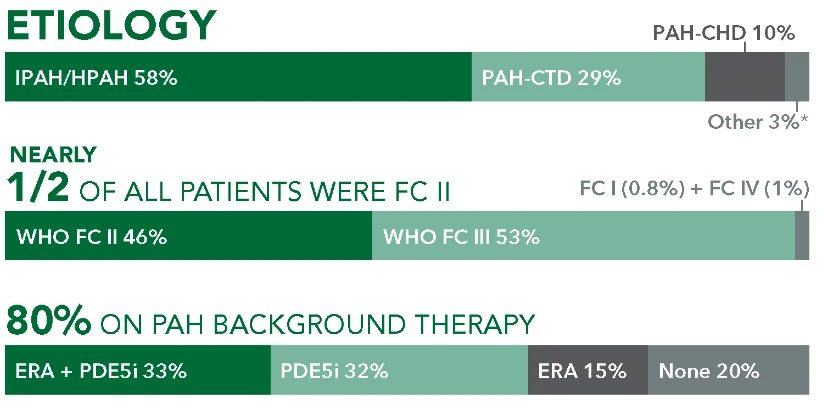For your patients with pulmonary arterial hypertension (PAH, WHO Group I)
 Actor portrayals.
Actor portrayals.For your patients with pulmonary arterial hypertension (PAH, WHO Group I)


Treat early with UPTRAVI®1
Evidence-based ESC/ERS Guidelines recommend UPTRAVI® (selexipag) at first follow-up for intermediate–low-risk patients.2* Learn more »
Treat early with UPTRAVI®1
Evidence-based ESC/ERS Guidelines recommend UPTRAVI® (selexipag) at first follow-up for intermediate–low-risk patients.2* Learn more »
Consistent and validated
efficacy1,3,4
The largest PAH pivotal trial that included a broad range of patients with diverse background therapies and etiologies
View GRIPHON TrialDemonstrated safety
profile1,4
A consistent, long-term safety profile with no increased risk of major bleeding
View GRIPHON SAFETYPatient-centric, oral BID dosing1,5
In GRIPHON, UPTRAVI® was proven effective regardless of the patients' personal maintenance dose
View UPTRAVI® DOSING






